Workshop Guide to Valve Clearances
By Steve Cooper, VJMC Editor
The valve train is the signature difference between two and four strokes; today we look at a prime example.
My Yamaha FZR250 had been given a basic clean bill of health. The only area that hadn’t yet been attended to was the valve clearances. If the gaps are too small I risk burning out valves, but if they are too slack the motor will sound noisy and performance may be compromised. I’m keen to learn and get going but in the words of Clint Eastwood’s character Harry Callahan… ‘a good man always knows his limitations’. The last time I adjusted cylinder valve clearances (and they were called tappets then) I was lying upside down under a 1973 VW Beetle.
As technology has unquestionably moved on since then, I feel some on-the-job-learning might be the prudent and safest approach. The long-suffering team at Webbs of Lincoln still seem happy to put up with me for a few more hours, so it seems like an ideal opportunity to experience another master class in four-stroke technology. In all honesty, we’re going to be looking to establish just how easy or difficult it is to measure valve clearance, and what can be done if they need adjustment. Is this sort of work DIY viable or is it best left to the experts?
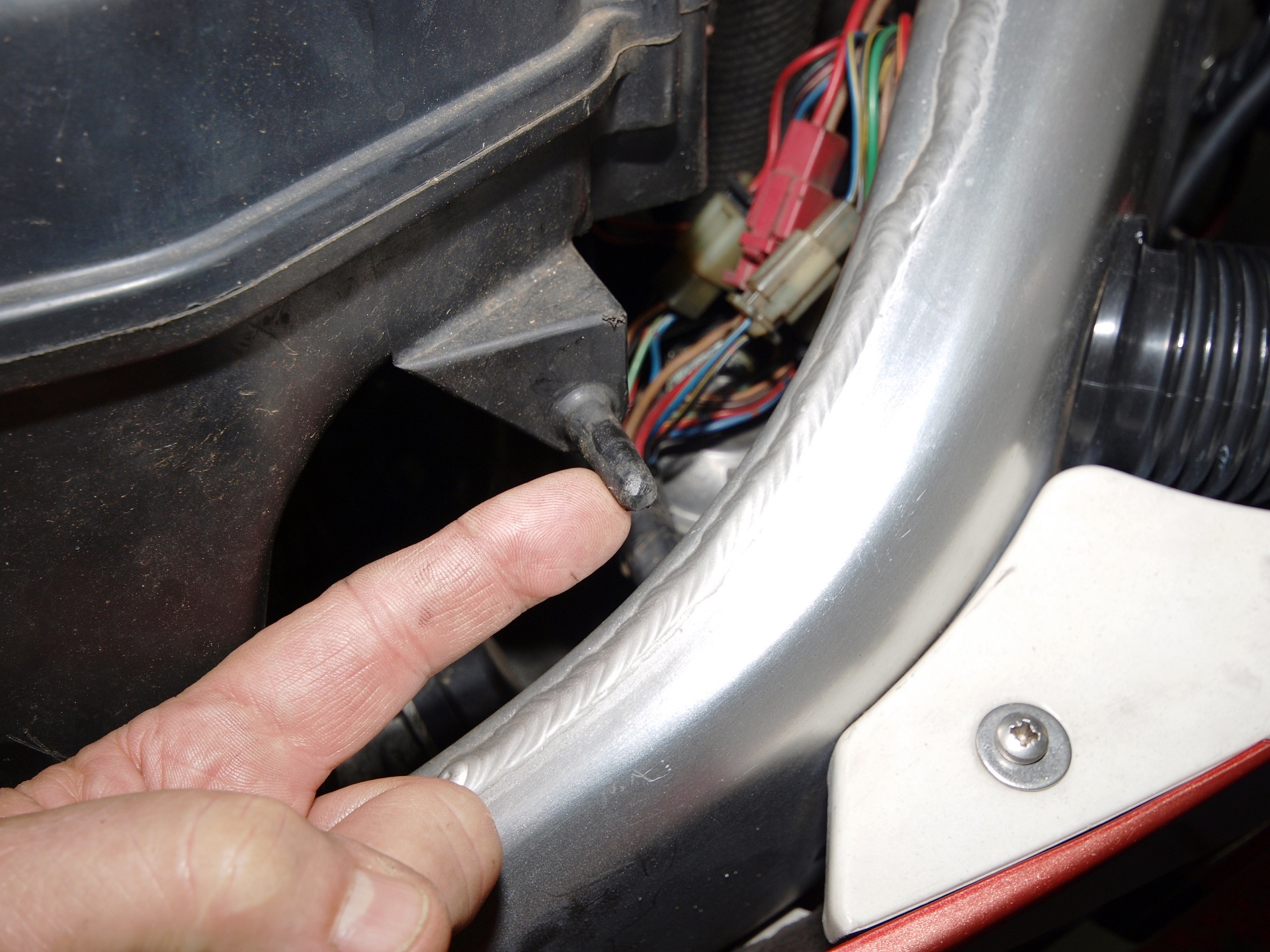
With the tank removed, the air box needs to come off. On the FZR it’s held captive on the frame with two lugs that push out of the frame side-spars. Each bike is different so check before you start levering and pulling.
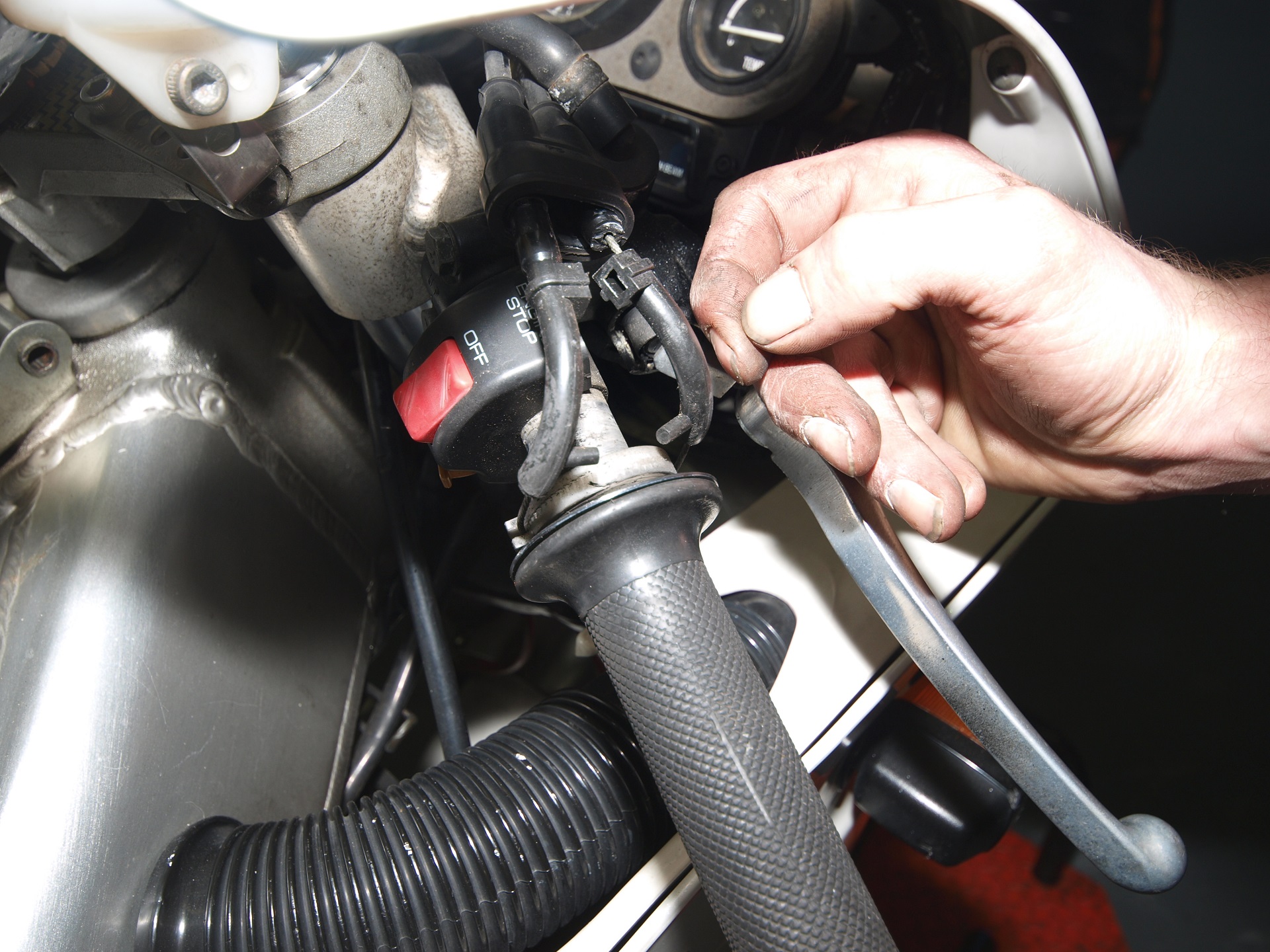
Access is tight and the carbs need to come off. Taking the cables out at the twist grip is the easiest way to get some slack without overt disassembly.
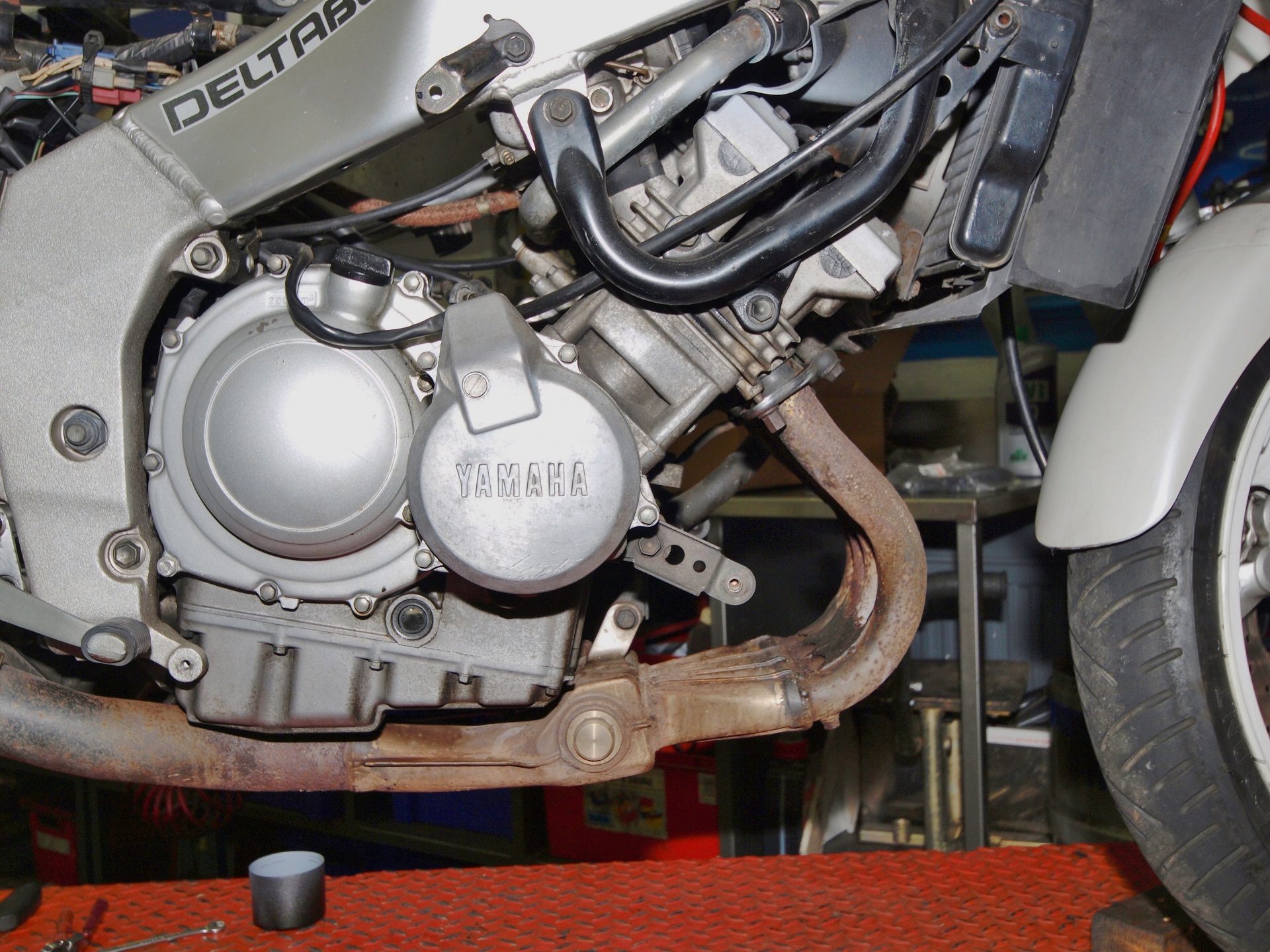
So this is what it looks like. The engine owes much to the original FZ750 with its heavily canted engine and down draught carbs; only this one is a third of the size.
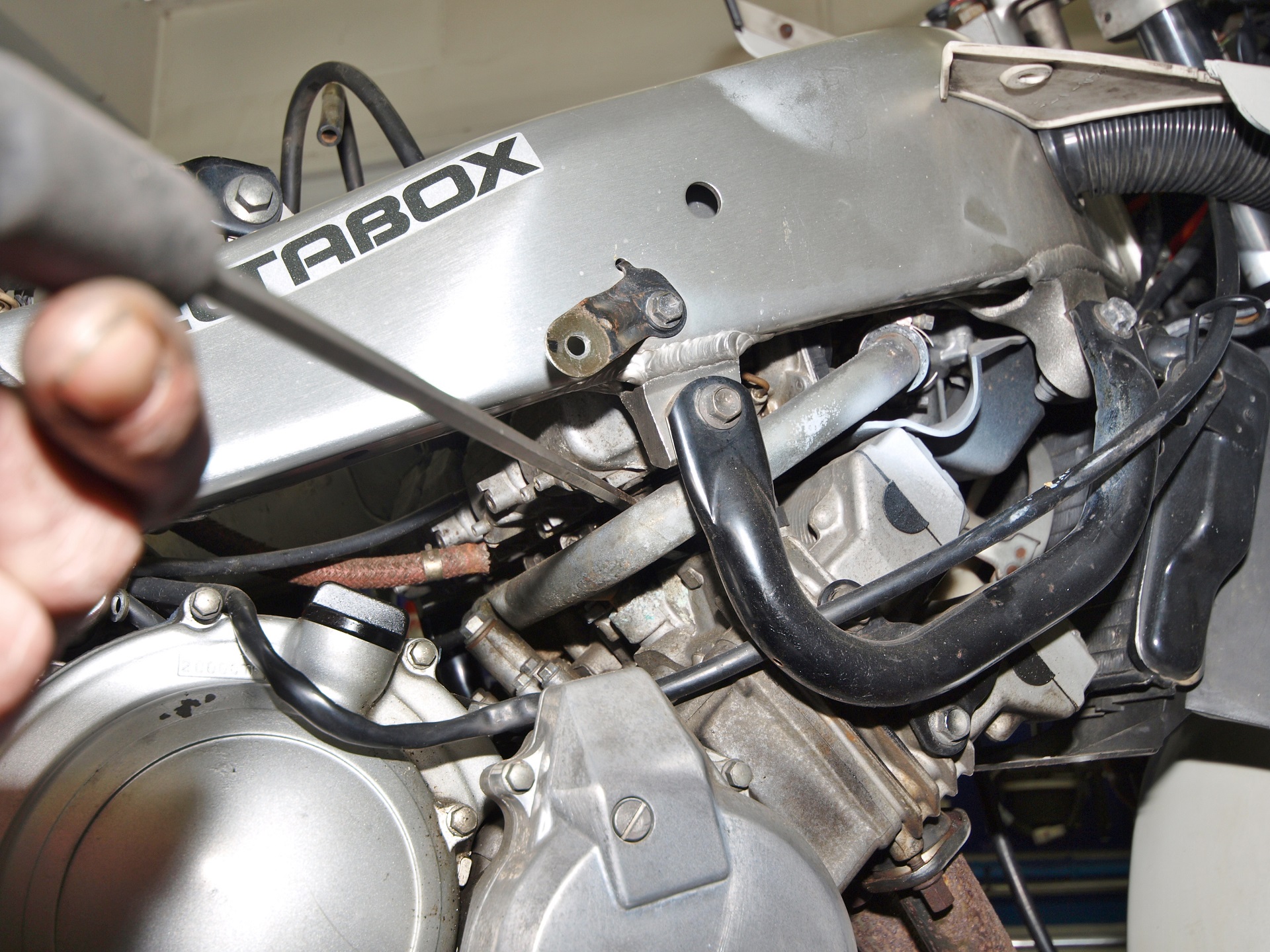
Even with the fairing off, it’s still very tight in there, but a long-series screwdriver allows us to slacken off the carb clamps.
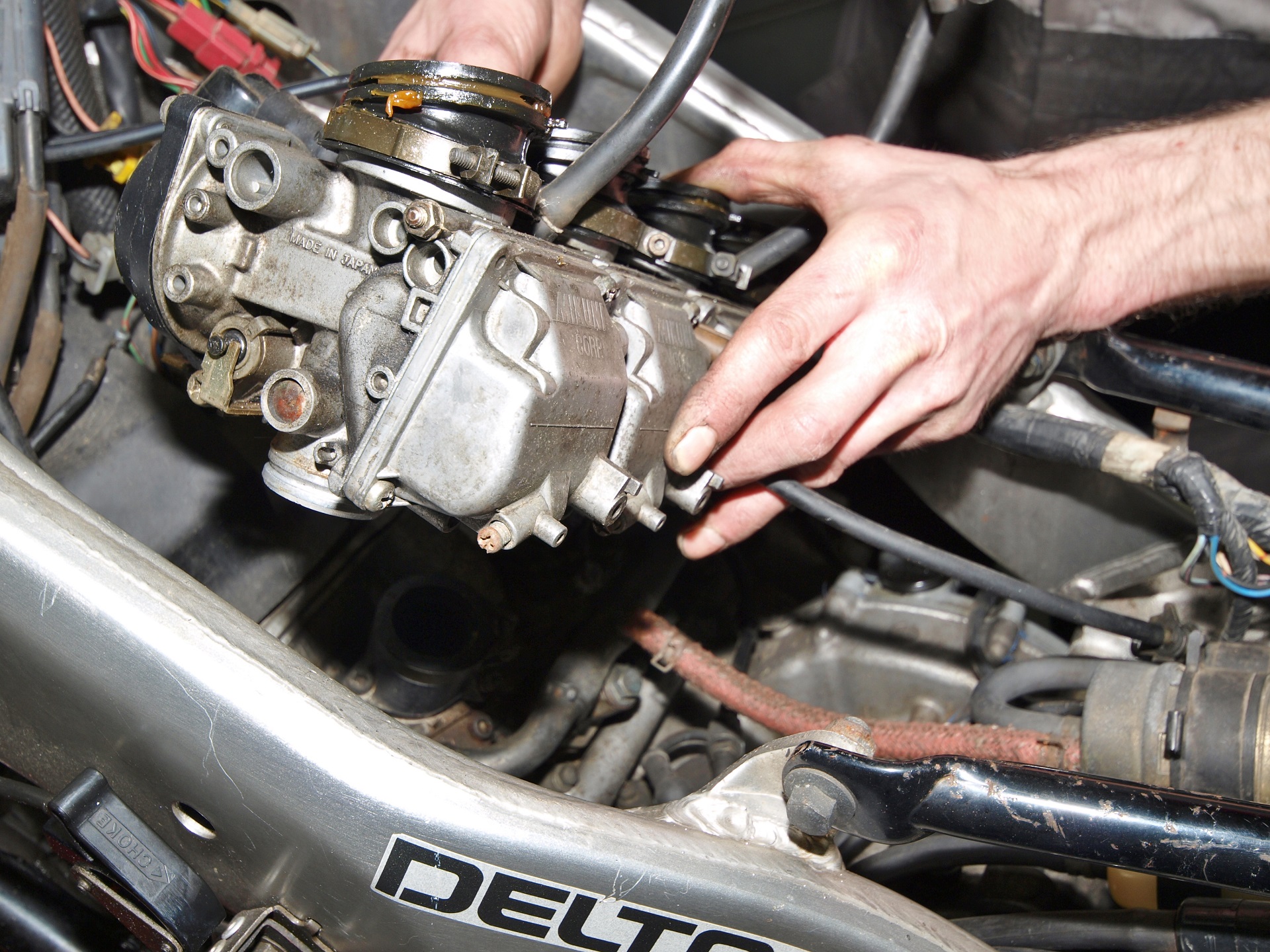
With the clamps slackened off and the throttle cables pulled through the frame a few inches, the carbs can be lifted out of the way.
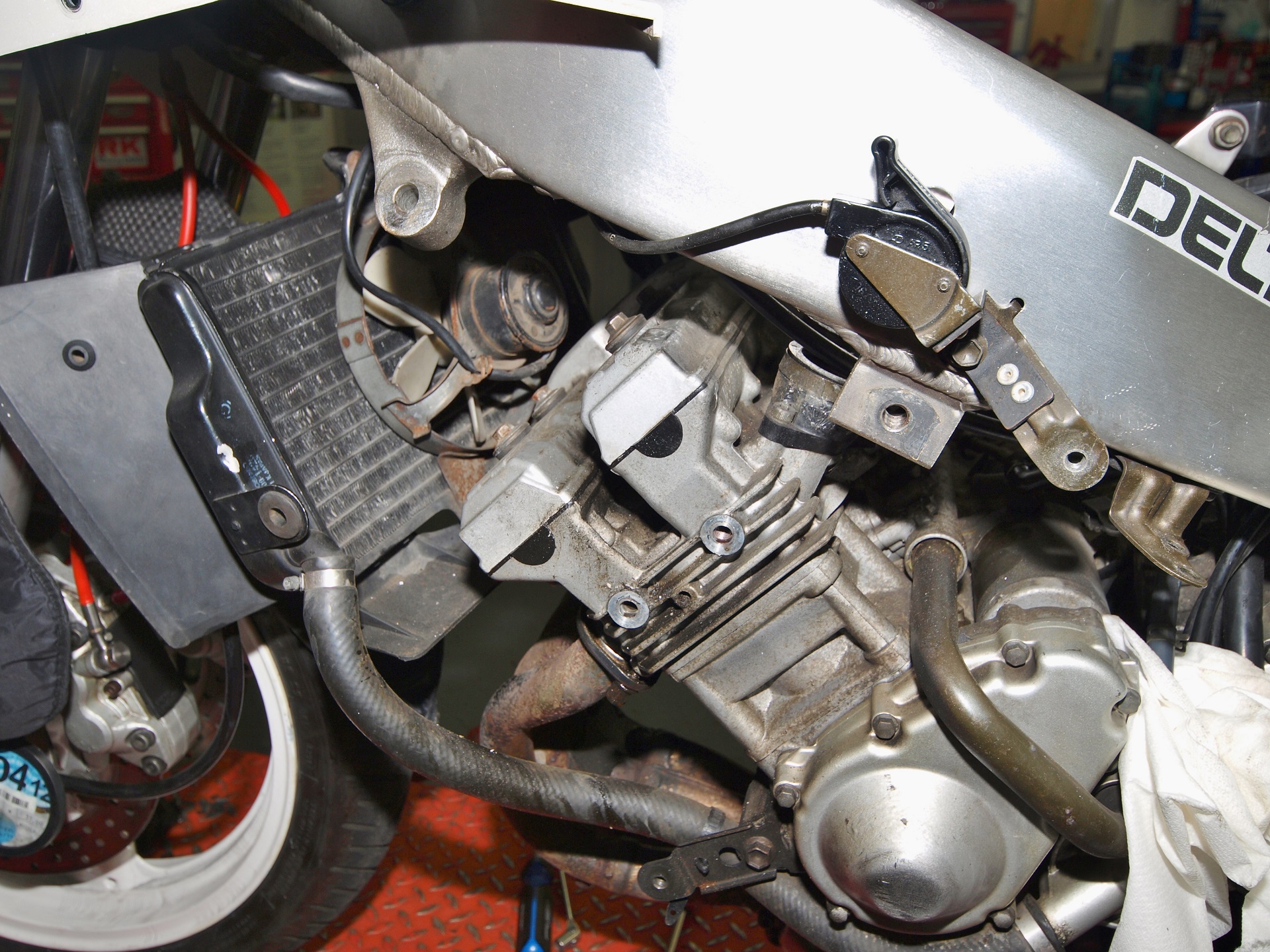
We’ve removed the HT leads but even so, access is still tight; Yamaha would say remove the radiator but we can get just enough room by moving the fan.
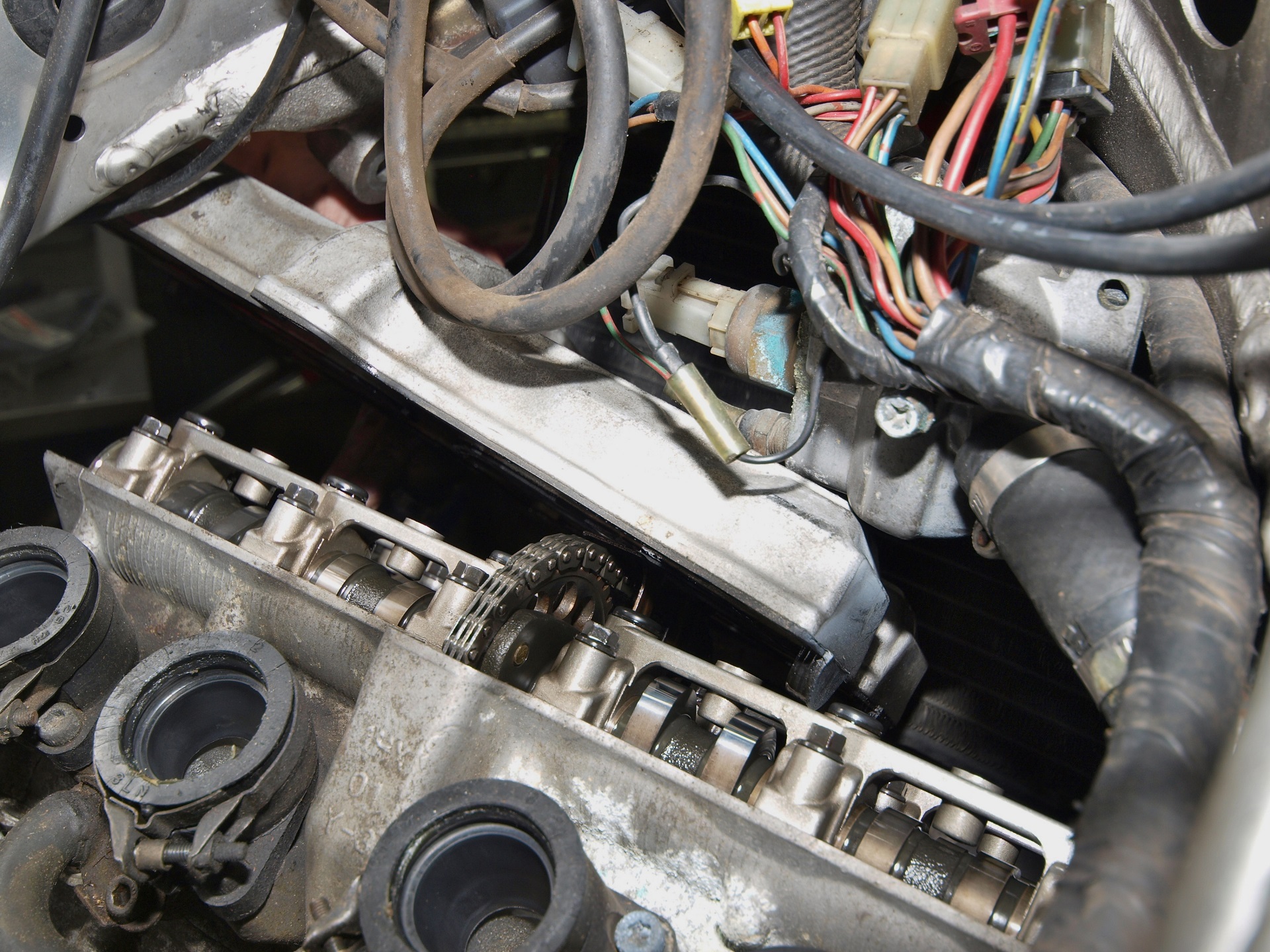
With the cam cover retaining bolts loosened and a little tap with a rubber mallet, the top end is finally revealed...
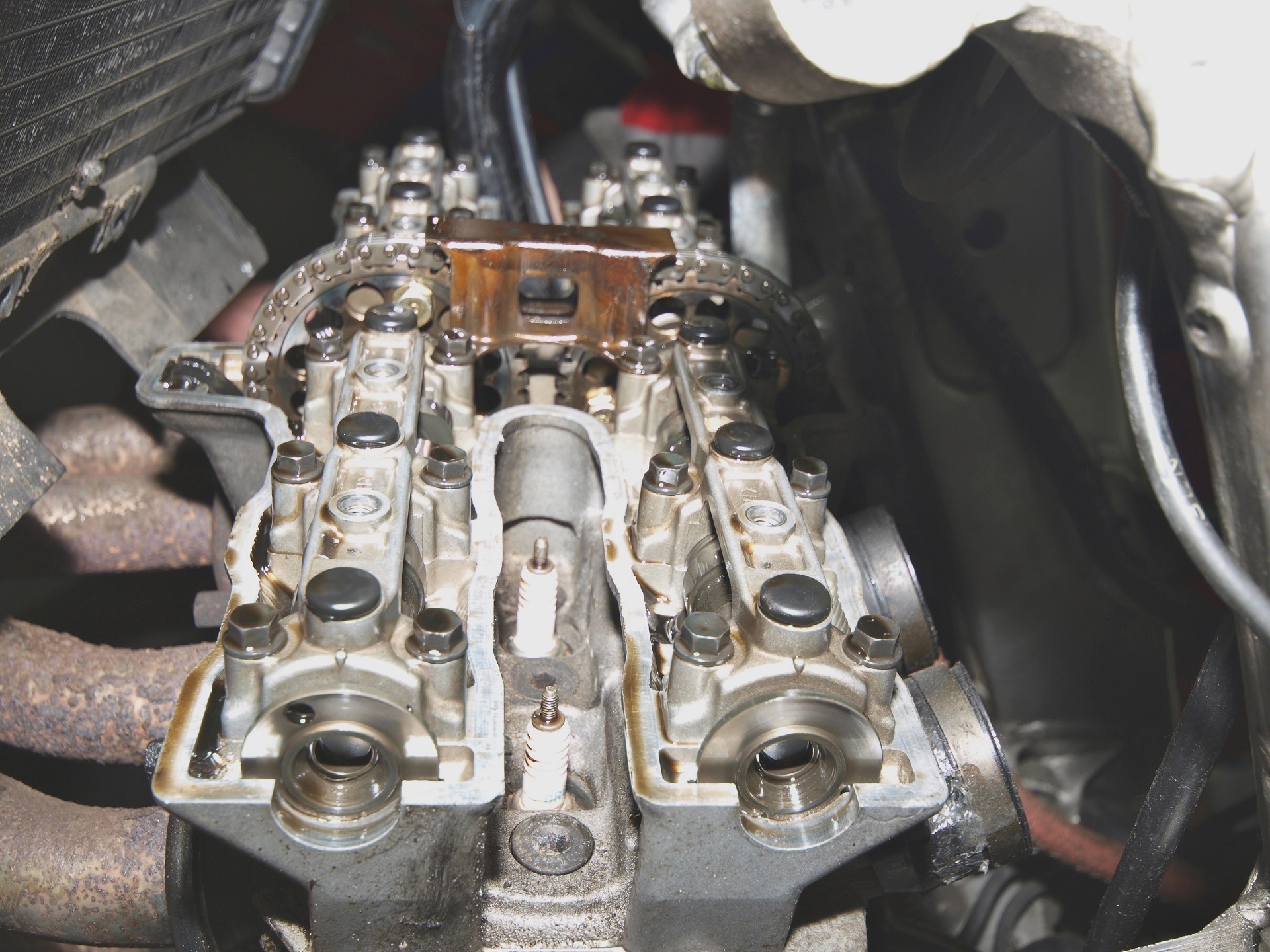
...and doesn’t it look impressive? Hy-Vo cam chain, sixteen cam lobes and hollow cam shafts; not that long ago this was the epitome of racing machinery.
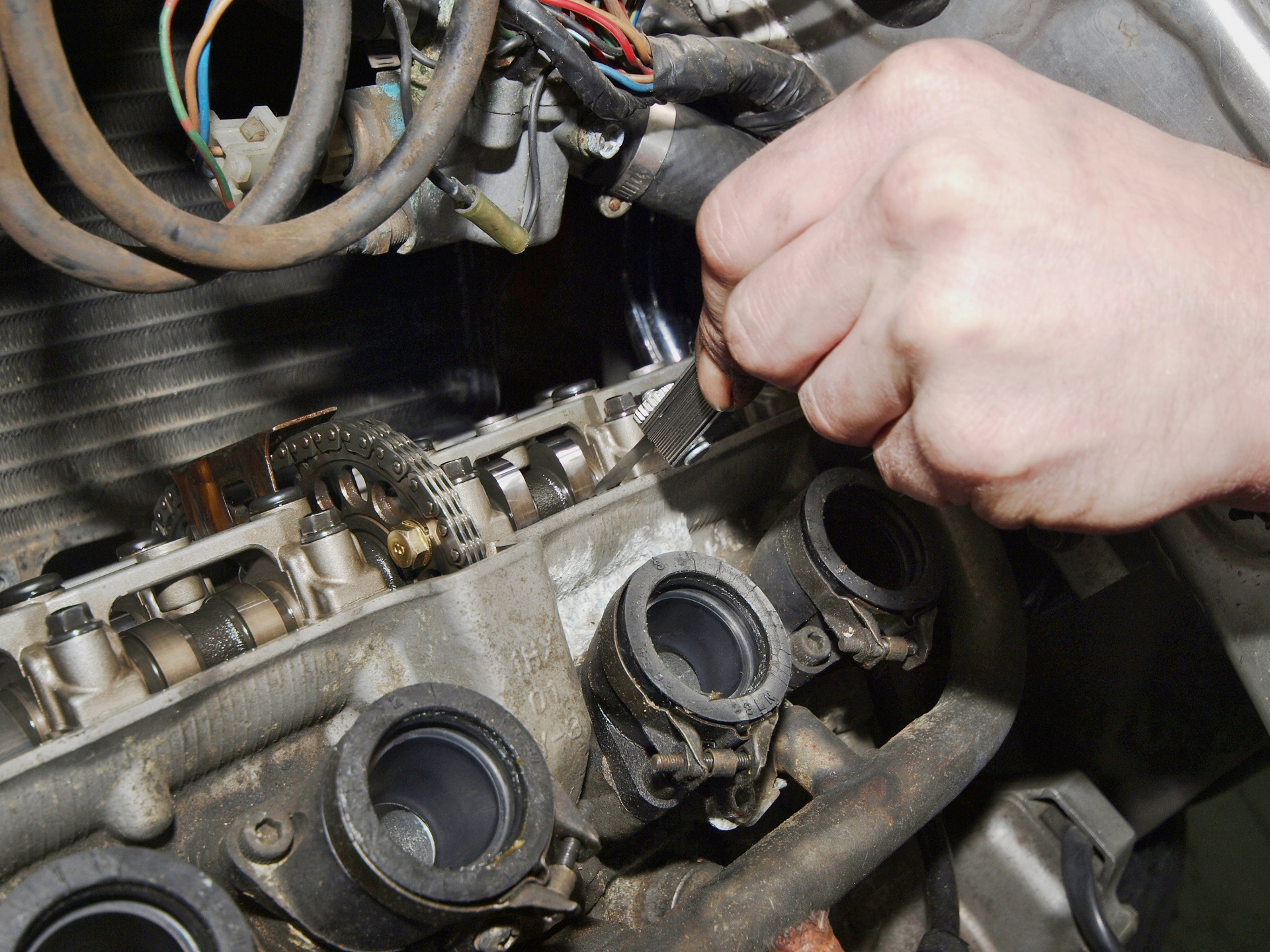
The clearances are measured using feeler gauges, with the highest point of the cam 180 degrees opposite to the valve/bucket. Due to the FRZ’s extreme engine angle, this obviously doesn’t equate to vertical.
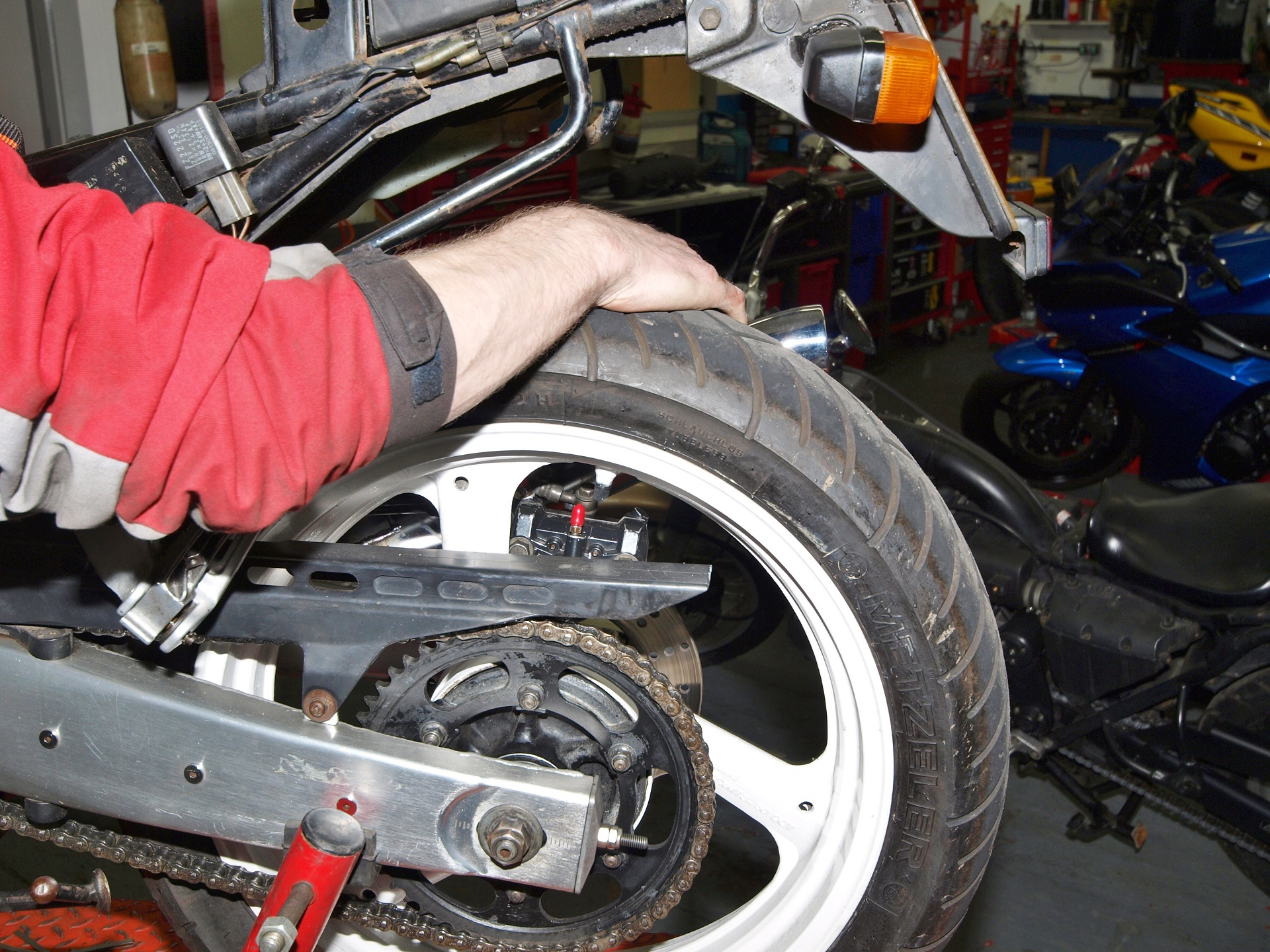
You could take off an engine cover and turn the crank over to move the cams. Or you could just think laterally and use Andy’s time-served method which is elegantly simple; a quick jerk of the back wheel works beautifully.
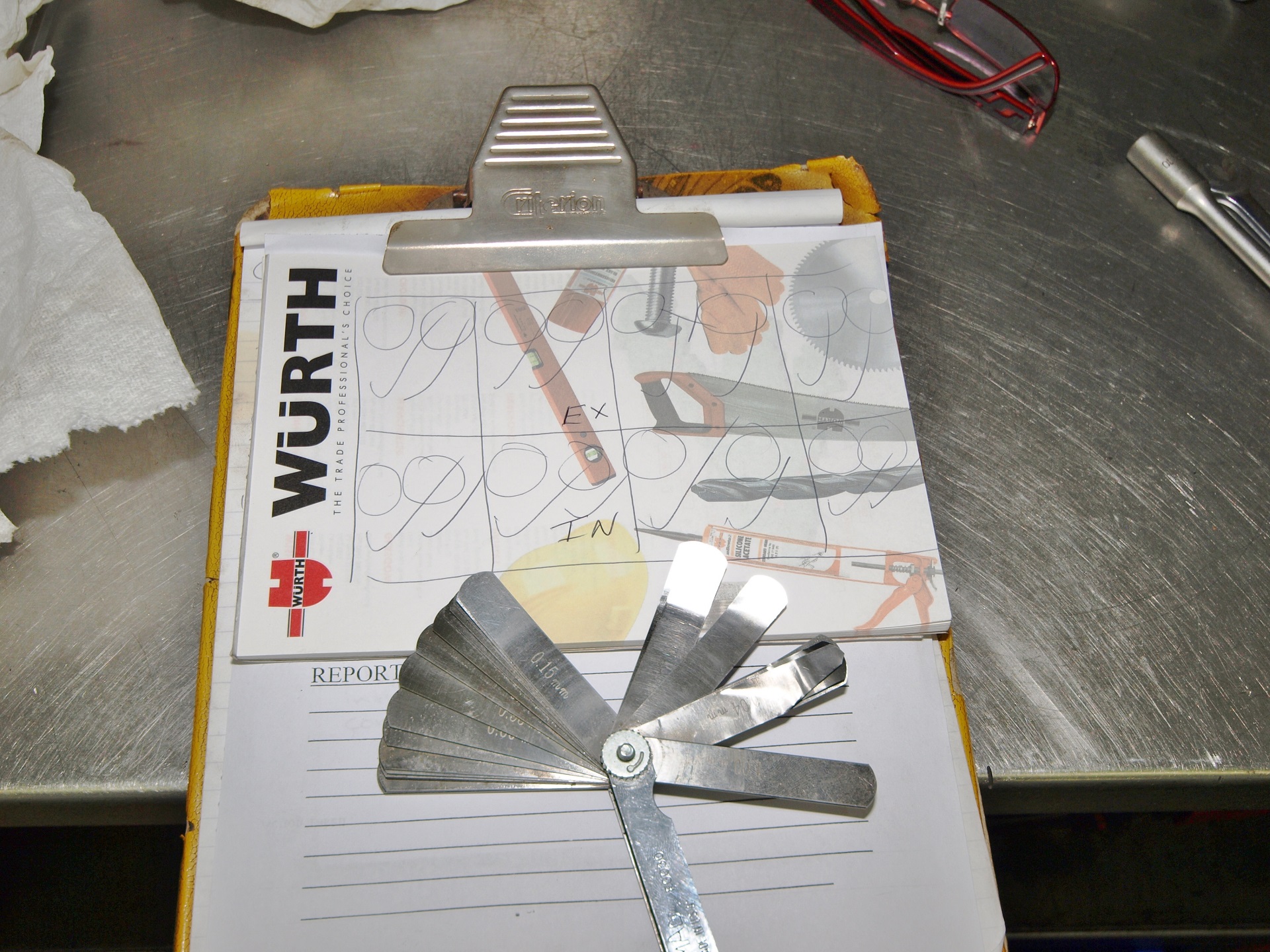
A simple 8 x 2 schematic sketch makes an excellent aide memoir, allowing us to keep a check of what we’ve measured and the results. In this case, everything is spot on.
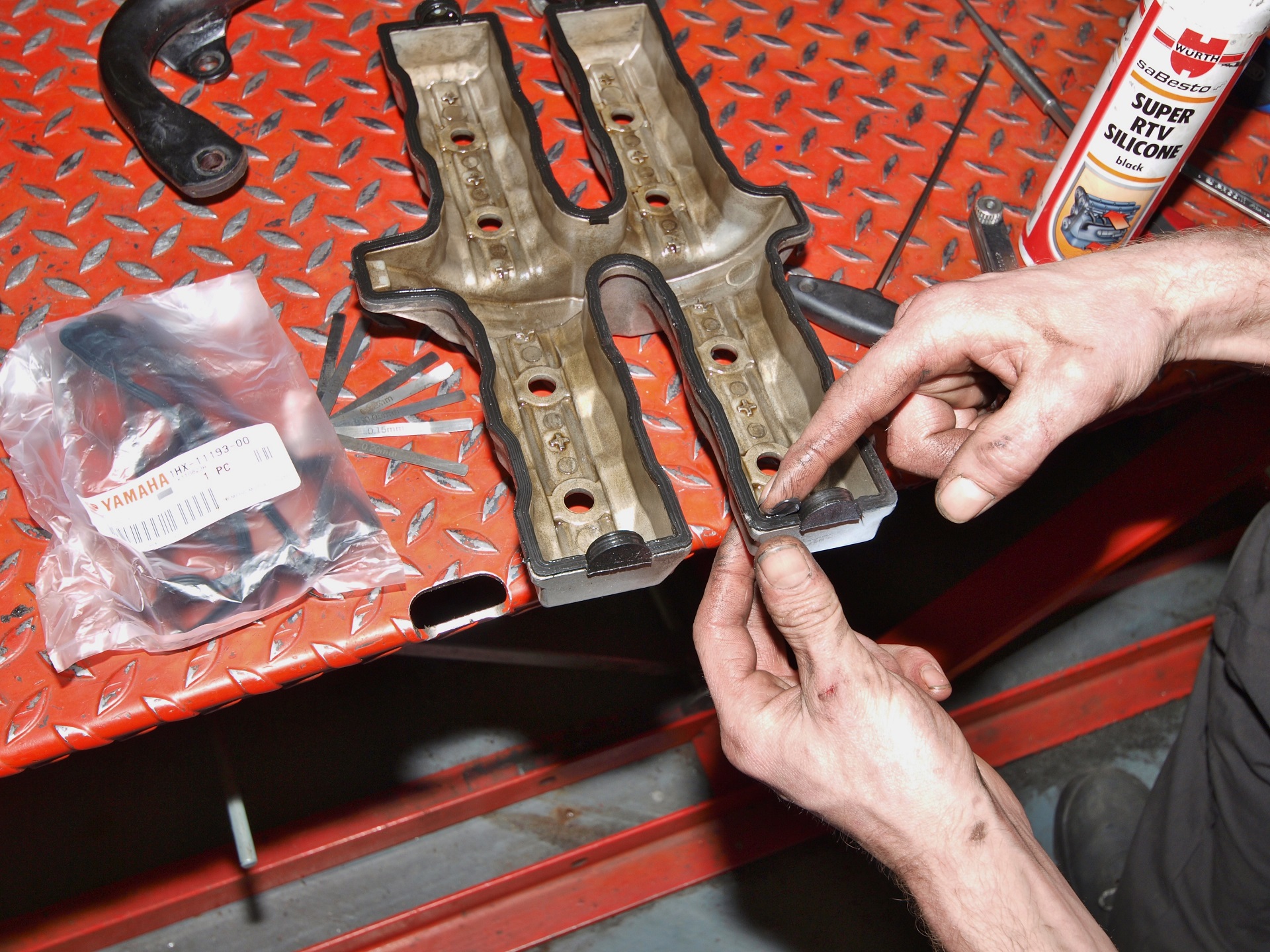
Putting it all back together is fairly straightforward if time-consuming. Cam box cover gaskets are available but often they can be cleaned and reused. A dab of the correct silicon RTV stops leaks at the stress points.
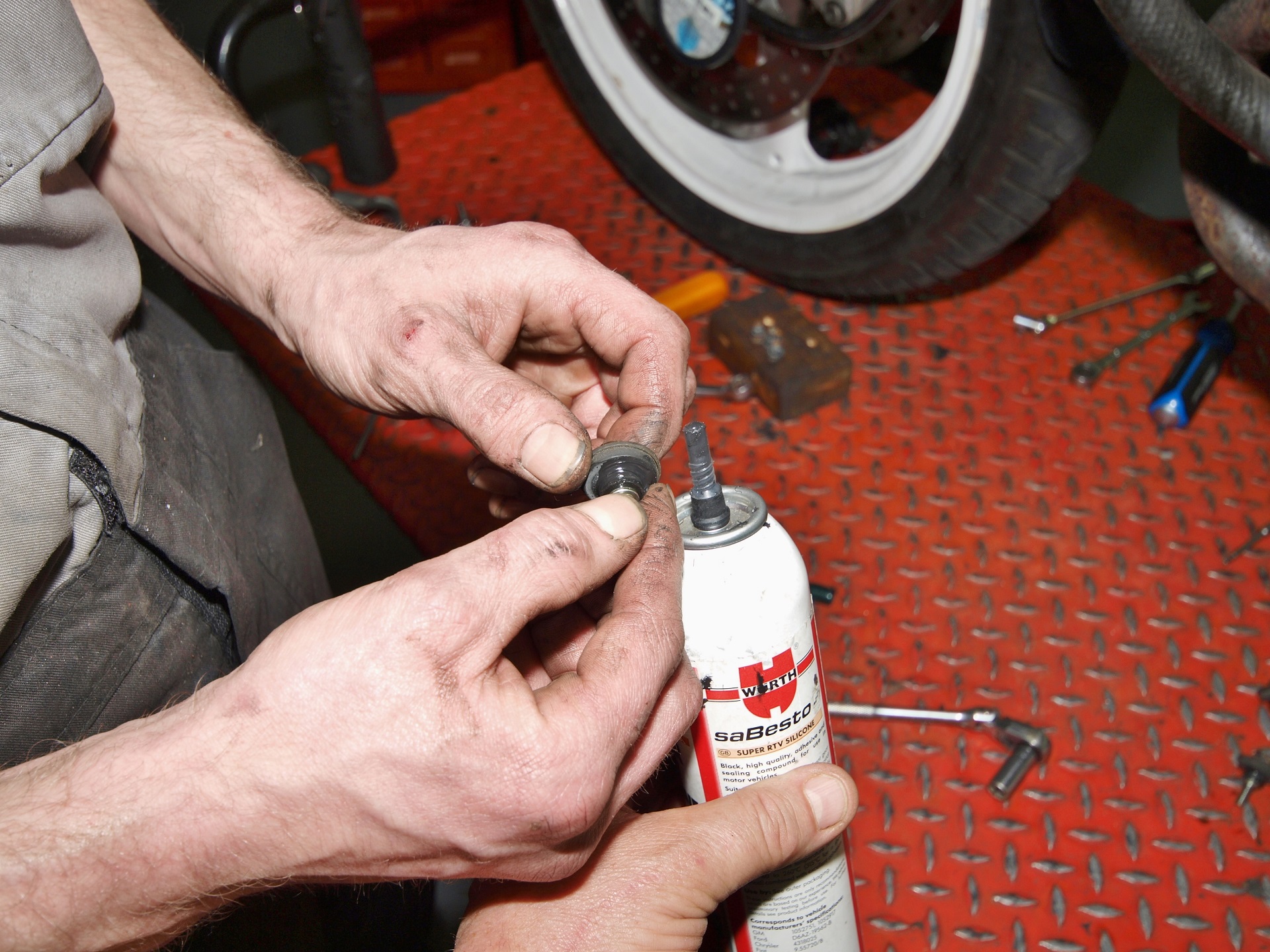
The shouldered and seal equipped bolts also benefit from a quick dab of sealer. The cam box cover can then be screwed down and we’re on the home straight.
So is this a job for the home mechanic? In all honesty, the answer is a qualified maybe. If you are a competent enthusiast, then yes it’s perfectly viable. However, if you’re a novice, unsure of what’s going on or totally clueless, it’d be quite easy to either get it wrong or give up halfway through. Treat each section of the job as a small project in itself, and it’d probably be much easier and less challenging or daunting.
If you need the bike to ride to work tomorrow, I’d suggest you don’t start working on it tonight straight after your evening meal. With sufficient time, the correct tools and some patience, checking the valve clearances should be within the capabilities of most owners who do some of their own maintenance.
Adjusting clearances and expectations
Outside of desmodromic, there are three basic methods of valve clearance adjustment.
Firstly and within the capabilities of most home mechanics, are the familiar classic screw and lock nut adjusters. With the appropriate spanners, screwdrivers etc, setting clearances on this system is simple and straightforward.
Up a level of complexity is the classic shim and bucket system where the cam bears down on a shim, that’s captive in a bucket, on top of the valve stem. Measuring the clearances is fairly straightforward, but the adjustment is a little more complex. Normally it’s possible to buy or borrow the specialist tool to depress the valve/bucket, thus allowing removal of a shim, but you’ll need a box of spare shims to make the necessary adjustments. It’s perfectly possible to play swapsies with most of the shims, but inevitably there will always be a couple that you’ll need to buy. This means your bike may be off the road whilst you wait for the postie to drop off the two or three shims you still need.
At the top end of the difficulty scale comes the shim and inverted bucket scenario, as per our FZR250. In order to adjust even one clearance, the cams have to come out, which demands a very precise regime and attention to detail. On motors with hollow cam shafts, it’s entirely possible to crack a cam simply by slackening the cam caps either in the wrong sequence or by undoing one all the way, leaving excess stress on the rest of the shaft. Whilst it’s not impossible to do it in a home workshop, it would require a large amount of skill and expertise. Unless you had access to both, along with a large box of the appropriate shims, we’d respectfully suggest you might want to leave such work to the experts.
Join the conversation
Do you have any experience with adjusting valve clearances or have any workshop top tips to share? Let us know in the comments function below.
For more technical advice, visit Motorcycle Workshop Guides: The Complete List.
To find out more about a classic bike policy from Footman James and to get to an instant quote online, visit our Classic Bike Insurance page.
The information contained in this blog post is based on sources that we believe are reliable and should be understood as general information only. It is not intended to be taken as advice with respect to any specific or individual situation and cannot be relied upon as such.

COMMENT